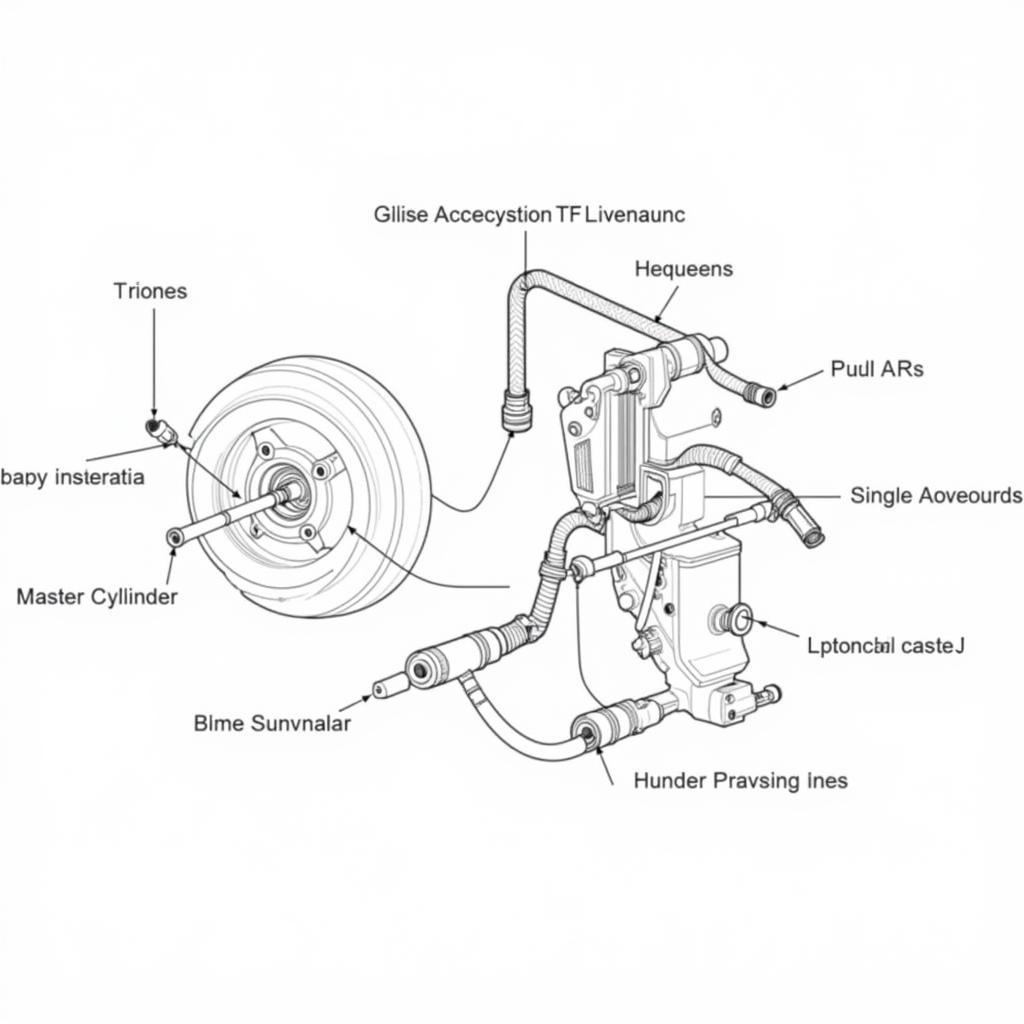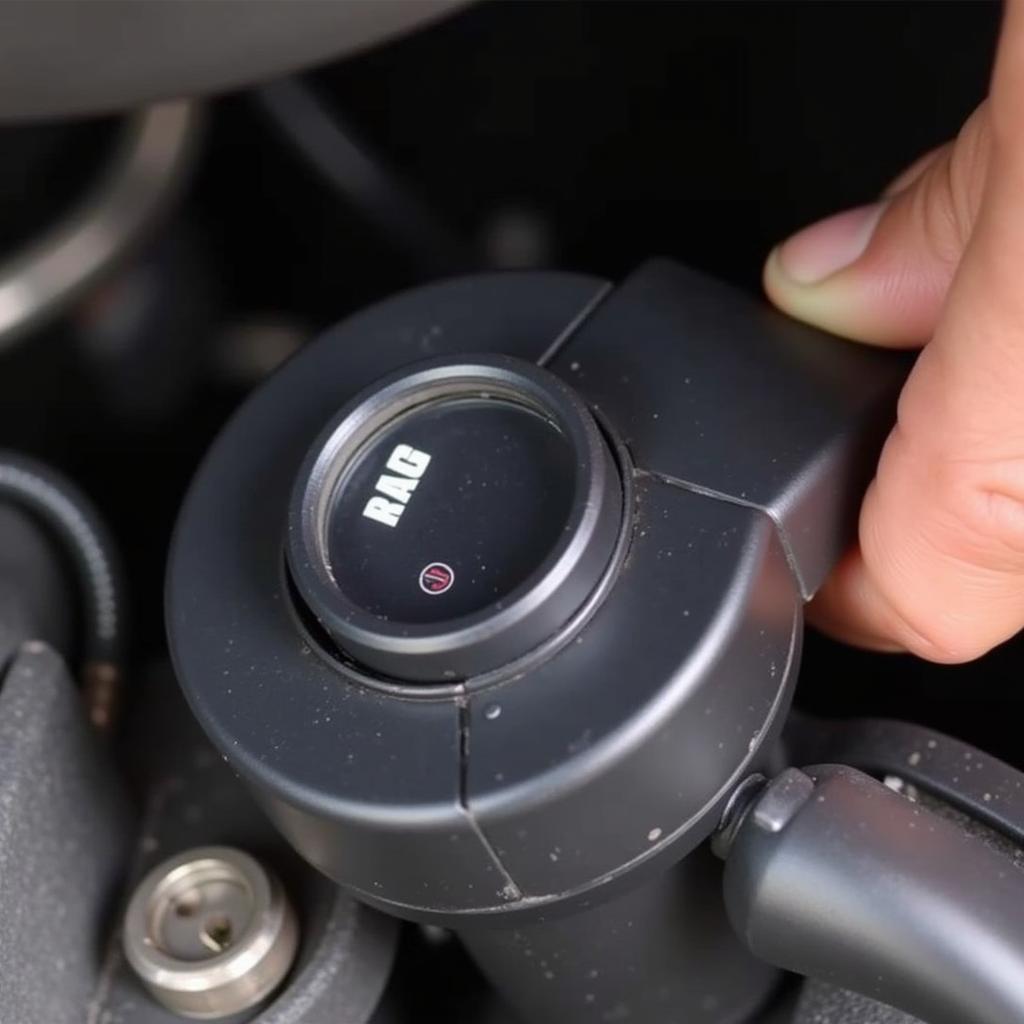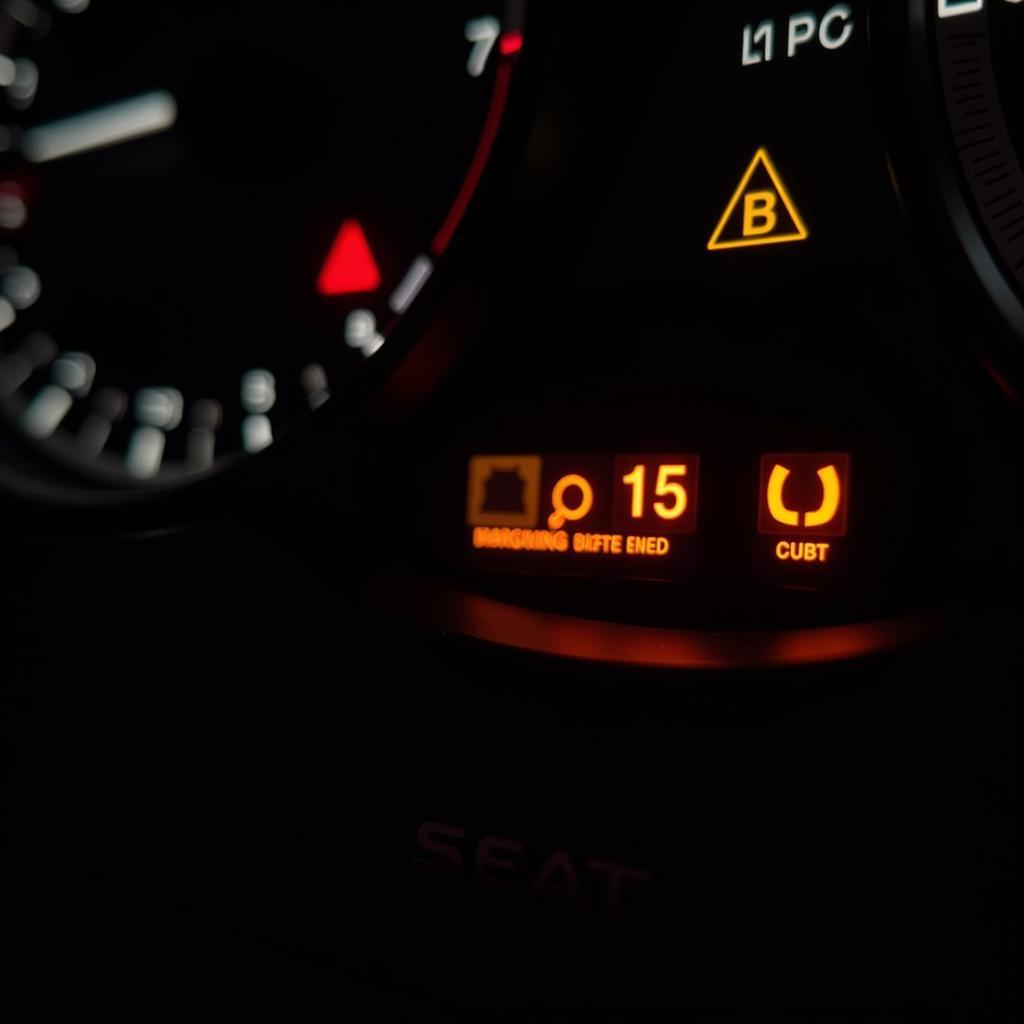A broken brake line can be a serious safety hazard, and in some cases, it can even trigger a false brake booster warning. This might seem counterintuitive – after all, why would a problem with the hydraulic system trigger a warning related to the vacuum-assisted booster?
Let’s dive into understanding why a broken brake line can sometimes lead to this seemingly unrelated warning light and how to diagnose and address this issue effectively.
Understanding Your Brake System: Hydraulics vs. Vacuum Assist
Your vehicle’s braking system is a beautifully coordinated two-part system, with each part playing a critical role in bringing your vehicle to a safe stop.
-
Hydraulic System: This part comprises the brake pedal, master cylinder, brake lines, calipers, and wheel cylinders. It uses hydraulic pressure to clamp the brake pads against the rotors (or shoes against drums), creating the friction needed to slow or stop your vehicle.
-
Vacuum-Assisted Brake Booster: This system works alongside the hydraulics to make braking easier. It uses a vacuum (in gasoline engines) or an electric pump (in some diesel and hybrid vehicles) to multiply the force you apply to the brake pedal. This means you don’t have to push as hard to engage the brakes.
 Car Brake System Diagram
Car Brake System Diagram
How a Broken Brake Line Can Lead to a False Booster Warning
Now, here’s where the plot thickens. While seemingly unrelated, a leak in the hydraulic system (like a broken brake line) can sometimes cause a drop in vacuum pressure, especially in older vehicles where the booster’s vacuum check valve might be worn. Here’s how:
-
Loss of Hydraulic Fluid: A broken brake line leads to a loss of brake fluid, which is essential for transmitting hydraulic pressure from the master cylinder to the brakes.
-
Increased Pedal Travel: With less fluid in the system, you’ll notice your brake pedal traveling further towards the floor when you press it. This is because the master cylinder needs to move more to displace the same volume of fluid.
-
Vacuum Leak: In some cases, this increased pedal travel can cause the brake booster to operate for extended periods or at higher than normal levels. If the booster’s check valve is worn, it might not be able to maintain a proper vacuum seal, leading to a drop in vacuum pressure.
-
False Warning: Many modern vehicles have sensors that monitor the vacuum pressure in the brake booster. When this pressure drops below a certain threshold, it can trigger a brake booster warning light on your dashboard, even though the booster itself might be functioning correctly.
Diagnosing the Problem: Separating the Symptoms
Here’s the tricky part – a false brake booster warning can mimic the symptoms of a genuine booster issue, so it’s crucial to diagnose the problem correctly.
Symptoms that point more towards a broken brake line:
- Soft or Spongy Brake Pedal: This is often the first sign of a brake fluid leak.
- Brake Pedal Goes to the Floor: As the leak worsens, you might find the brake pedal offering little to no resistance.
- Visible Brake Fluid Leak: Check your garage floor or driveway for signs of leaking fluid. It’s typically clear to amber in color.
- Low Brake Fluid Level: Inspect the brake fluid reservoir. If it’s significantly below the “Min” line, you likely have a leak.
Symptoms that might indicate a genuine brake booster problem:
- Hard Brake Pedal: A failing brake booster often makes the brake pedal very hard to press, requiring excessive force.
- Hissing Noise: You might hear a hissing sound when you press the brake pedal if there’s a vacuum leak in the booster.
- Engine Stalling When Braking: A significant vacuum leak can affect the engine’s air-fuel mixture, leading to stalling, especially when braking.
 Checking Brake Fluid Level
Checking Brake Fluid Level
Don’t Delay – Seeking Professional Help
Important: If you suspect a broken brake line or any other brake system issue, it’s crucial to stop driving immediately and seek professional help. Driving with compromised brakes is extremely dangerous.
Remote Diagnostics and Software Solutions
In today’s technologically advanced world, specialized technicians, like myself, can often perform remote diagnostics and even software-based repairs for certain vehicle issues.
Here’s how it works:
- Connect Your Vehicle: Using a specialized OBD-II scanning tool that interfaces with your vehicle’s onboard computer, you can share real-time data with a remote technician.
- Diagnose the Issue: The technician can analyze the data to identify error codes, sensor readings, and system performance indicators, helping pinpoint the root cause of the problem.
- Software Updates and Calibrations: In some cases, brake system issues might be resolved through software updates or calibrations, which a remote technician can perform wirelessly.
Important Considerations for Remote Diagnostics:
- Vehicle Compatibility: Not all vehicles are compatible with remote diagnostics, and the extent of diagnostics and repairs that can be performed remotely varies depending on the make, model, and year of your vehicle.
- Technician Expertise: It’s essential to choose a reputable and qualified remote diagnostic service provider with experience in your vehicle’s make and model.
Conclusion
While a broken brake line and a false brake booster warning might seem unrelated, the reality is that they can be linked, especially in older vehicles. It’s vital to understand the potential connection between these systems to ensure accurate diagnosis and repair. Always prioritize safety and seek immediate professional help if you suspect any issues with your vehicle’s braking system. Don’t risk your safety or the safety of others.

